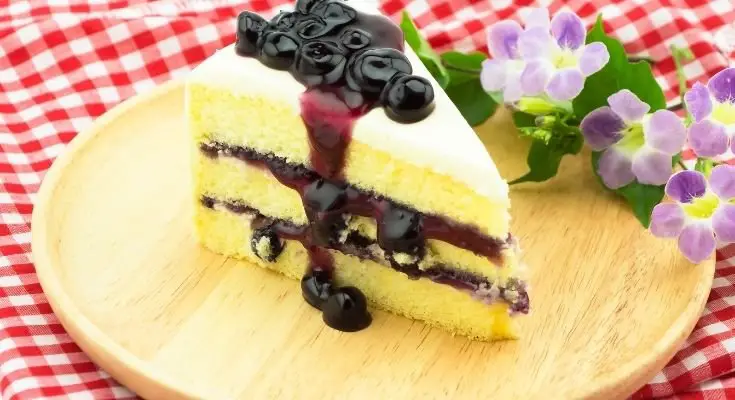When it comes to cake, there’s nothing quite like a delectable slice topped with creamy, smooth cream cheese frosting. But what if you find yourself with an entire cake and not enough guests to finish it? Can you save that delicious creation for later by freezing it with the frosting on?

Freezing Cakes with Cream Cheese Frosting
Freezing the Cake Before Frosting
If you plan ahead, you can freeze a cake before applying the cream cheese frosting. Once the cake has cooled completely, wrap it tightly in plastic wrap or aluminum foil to prevent freezer burn.
Then, place it in a suitable airtight container or a heavy-duty freezer bag. This method is particularly useful when you have extra cake layers or cupcakes that you want to frost individually later.
Freezing the Cake After Frosting
The more common scenario is freezing the cake after frosting it with cream cheese frosting.
While it’s possible, there are some considerations to keep in mind. Cream cheese frosting can become softer after freezing, and the texture may slightly change upon thawing.
However, if you follow the right steps, you can still preserve the taste and overall quality.
Best Practices for Freezing Cake with Cream Cheese Frosting
To ensure the best results when freezing a cake with cream cheese frosting, consider the following tips:
Proper Storage Containers
Use a sturdy, airtight container to protect the cake from absorbing unwanted odors and flavors from the freezer. If you’re using a cake carrier or a cake storage container, make sure it’s airtight and freezer-safe.
Pre-freezing the Cake
Before placing the cake in the airtight container, pre-freeze it for about 1-2 hours. This step helps the frosting set and prevents it from getting smudged inside the container during freezing.
Wrapping the Cake
For extra protection, wrap the pre-frozen cake with plastic wrap or wax paper. This additional layer will prevent freezer burn and maintain the frosting’s texture.
Thawing Frozen Cake with Cream Cheese Frosting
When you’re ready to enjoy your frozen cake, it’s crucial to thaw it correctly. The best way to thaw a cake with cream cheese frosting is by transferring it from the freezer to the refrigerator.
Slow thawing in the fridge ensures that the cake thaws evenly without compromising its taste or texture.
Tips to Maintain Frosting Texture After Thawing
Avoiding Condensation
To preserve the cream cheese frosting’s smoothness, avoid exposing the cake to sudden temperature changes.
Condensation can form on the frosting, making it soggy. Therefore, let the cake reach room temperature gradually after thawing in the refrigerator.
Reapplying Frosting
If you notice any minor texture changes in the cream cheese frosting after thawing, you can touch up the cake by reapplying a thin layer of fresh frosting.
This step will help restore the cake’s original appearance and taste.
Can All Types of Cakes with Cream Cheese Frosting Be Frozen?
In general, most cakes with cream cheese frosting can be frozen successfully. However, certain types of cakes fare better than others during freezing and thawing. Here are a few examples:
Red Velvet Cake
Red velvet cakes, with their moisture and vibrant color, tend to freeze well with cream cheese frosting.
Carrot Cake
Carrot cakes, filled with delicious grated carrots and nuts, also freeze nicely with cream cheese frosting.
Hummingbird Cake
The delightful combination of pineapple, banana, and pecans in hummingbird cakes makes them suitable candidates for freezing with cream cheese frosting.
FAQs
Yes, store-bought cakes with cream cheese frosting can be safely frozen following the guidelines mentioned above.
When properly stored, a cake with cream cheese frosting can be kept in the freezer for up to 2-3 months.
Absolutely! Cupcakes with cream cheese frosting freeze well and make for delightful individual treats.
To store leftover cake with cream cheese frosting, wrap it in plastic wrap and place it in an airtight container in the refrigerator.
Conclusion
Freezing a cake with cream cheese frosting is indeed possible, but it requires some attention to detail.
By following the correct steps for freezing, thawing, and maintaining the frosting’s texture, you can savor your favorite cake even after some time has passed.
